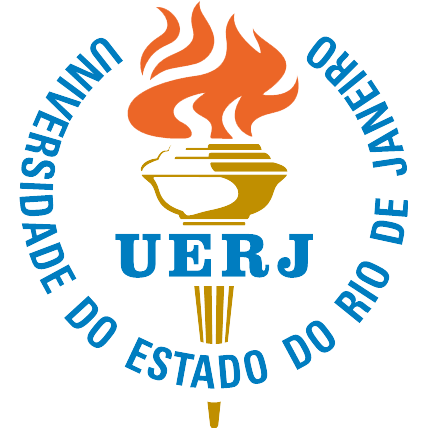Scientific evidence of urinary retention diagnostic practices: scoping review [Evidências científicas das práticas de diagnóstico da retenção urinária: scoping review] [Evidencias científicas de las prácticas de diagnóstico de la retención urinaria: scoping review]
DOI:
https://doi.org/10.12957/reuerj.2018.25840Keywords:
Nursing, urinary retention, evaluation, diagnosis.Abstract
Objective: to identify scientific evidence on urinary retention diagnostic practices. Method: this scoping review searched the Latin American & Caribbean Health Sciences Literature, Web of Science, National Library of Medicine, Cumulative Index to Nursing and Allied Health Literature, The Cochrane Library and SCOPUS databases. Of the 2482 references found, 23 were selected. Results: the 23 articles were grouped by patient clinic (surgery, rehabilitation or obstetrics) and by urinary retention diagnostic practices (intermittent urinary catheterization, by portable bladder ultrasound, combination of portable bladder ultrasound and urinary catheterization and/or non-invasive measures). Conclusion: diagnosis of urinary retention is an issue that has been discussed for some time. However, there is still no consensus, and in practice it is often performed ineffectively.
RESUMO
Objetivo: identificar evidências científicas sobre as práticas para o diagnóstico da retenção urinária. Método: trata-se de uma Scoping Review. A busca foi realizada nas bases de dados Literatura Latino-Americana e do Caribe em Ciências da Saúde, Web of Science, National Library of Medicine, Cumulative Index to Nursing and Allied Health Literature, The Cochrane Library e SCOPUS. Das 2482 referências encontradas, 23 foram selecionadas. Resultados: os 23 artigos que foram agrupados de acordo com a clínica do paciente: clínica cirúrgica, clínica de reabilitação e clínica obstétrica. E as práticas utilizadas para o diagnóstico da retenção urinária: cateterismo urinário de alívio, por meio do ultrassom portátil de bexiga, com a associação do ultrassom portátil de bexiga e do cateterismo urinário e/ou com medidas não invasivas. Conclusão: o diagnóstico da retenção urinária é um assunto que vem sendo discutido há algum tempo, no entanto, ainda não há um consenso, e a sua prática é realizada muitas vezes sem eficácia.
RESUMEN
Objetivo: identificar evidencias científicas sobre las prácticas para el diagnóstico de la retención urinaria. Método: se trata de una Scoping Review. Se realizó la búsqueda en las bases de datos Literatura Latinoamericana y del Caribe en Ciencias de la Salud, Web of Science, National Library of Medicine, Cumulative Index to Nursing and Allied Health Literature, The Cochrane Library y SCOPUS. De las 2482 referencias encontradas, se seleccionaron 23. Resultados: los 23 artículos se agruparon según la clínica del paciente: clínica quirúrgica, clínica de rehabilitación y clínica de obstetricia. Y las prácticas utilizadas para el diagnóstico de retención urinaria: cateterismo urinario de alivio, a través de ecografía (portátil) de vejiga, con la combinación de ecografía de vejiga y del cateterismo urinario y/o con medidas no invasivas. Conclusión: el diagnóstico de la retención urinaria es un tema que está siendo discutido desde hace algún tiempo, sin embargo, todavía no existe un consenso y su práctica se realiza a menudo ineficazmente.
Downloads
Published
How to Cite
Issue
Section
License
When publishing in Revista Enfermagem UERJ, the authors declare that the work is their exclusive authorship and therefore assume full responsibility for its content.
Authors retain copyright to their article and agree to license their work using a Creative Commons Attribution International Public License (CC BY), thereby accepting the terms and conditions of this license (https://creativecommons.org/licenses/by/4.0/legalcode.en), which allows material created by the author to be distributed, copied and displayed by third parties. The original work must be cited and present a link to the article available on the website of the journal in which it was published.
The Copyright of the articles published in Revista Enfermagem UERJ belongs to their respective author(s), with the rights of first publication assigned to Revista Enfermagem UERJ, with the work simultaneously licensed under a Creative Commons License CC BY, which allows sharing of work with recognition of authorship and initial publication in this journal.
The authors grant Revista Enfermagem UERJ the right of first publication, to identify themselves as the original publisher of the work and grant the magazine a license of non-exclusive rights to use the work in the following ways:
- Sell and/or distribute the work in printed copies and/or electronic format;
- Distribute parts and/or the work as a whole with the aim of promoting the magazine through the internet and other digital and printed media;
- Record and playback work in any format, including digital media.
In line with the journal's policies, each published article will be assigned a Creative Commons Attribution (CC BY) license.









